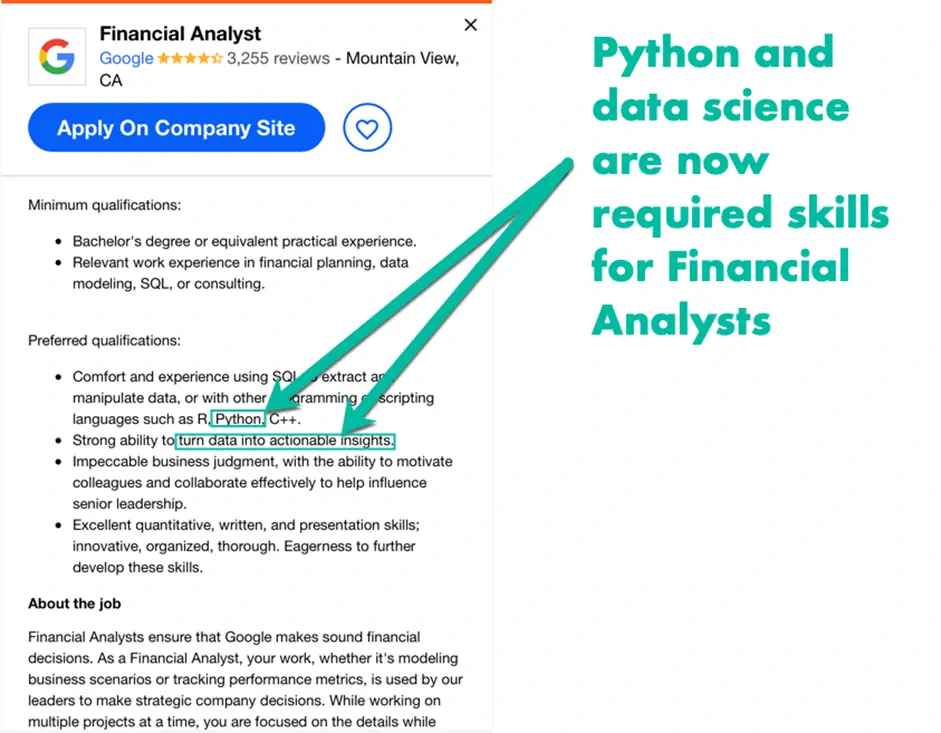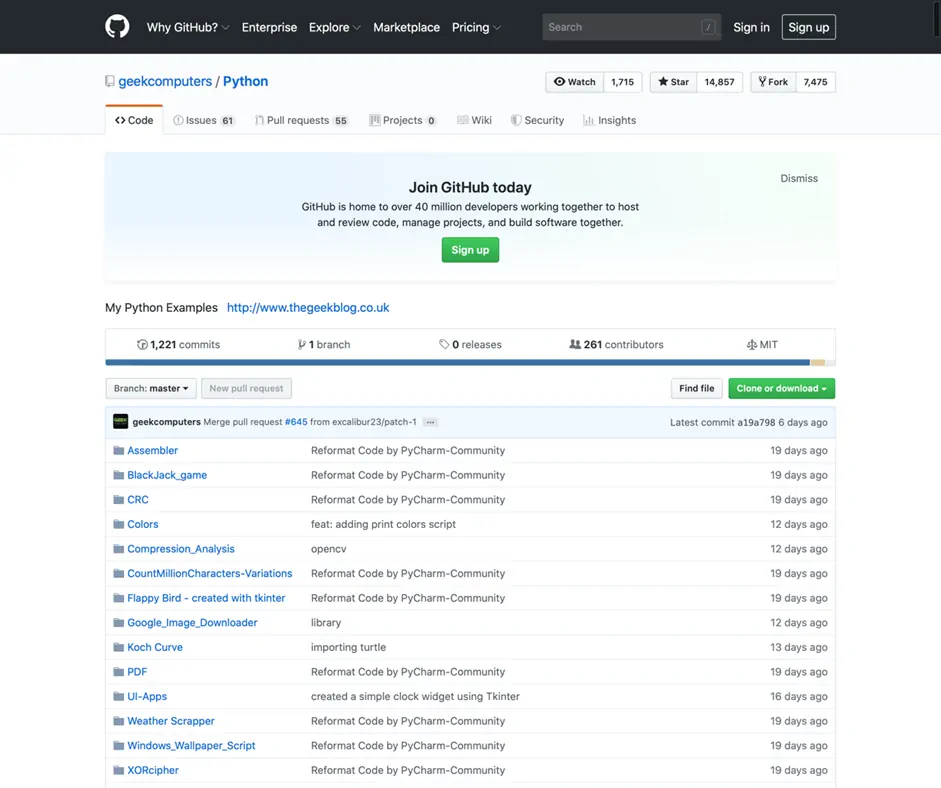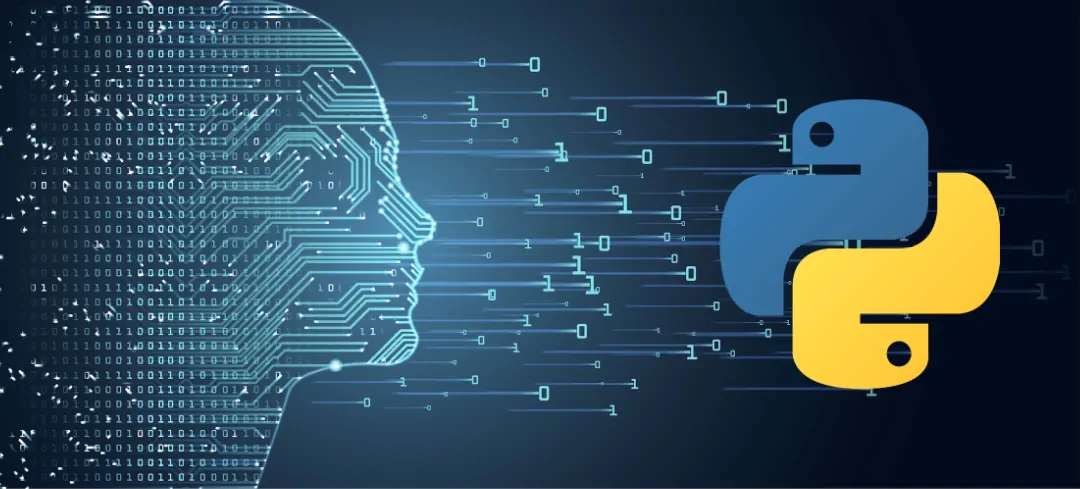Python is a high-level and object-oriented programming language that supports structured and functional programming patterns. Because of its features, Python can quickly and efficiently process and correlate large and complex data sets. That’s why unicorn startups like Uber, PayPal, and Facebook have chosen Python as the programming language they used to create their applications. It's also why more developers are taking the time to learn Python for data science. Here are other reasons why developers (and even non-developers) are investing in Python for data science courses and certifications.
1. It is easy to learn Python for data science.
Before you create a code using any programming language, you need to know two things: the commands to use and the order on how they should be written.
These two parameters are what makes coding a very tedious task to complete.
If you get any of these requirements wrong, your program won't run.
What makes coding even more complicated is that many of the commands used to create codes using popular programming languages like Java and Ruby aren’t straightforward.
For example, if you are going to create a code in Java to print out the phrase “Hello World” on the screen, the code would look something like this:
public class Main
{
public static void main(String args[])
{
System.out.println("Hello, World");
}
}You need to know by heart what each of these commands means, why they are necessary to include in the code, and why should they be placed in this order.
Otherwise, it will be tough to fix the code if the program doesn't run the way you want it to.
That’s why it can take a programmer a long time to learn, master, and use to create programs.
Python, on the other hand, uses commands that are more straightforward compared to other languages. The syntax used to string commands to create a code snippet is also more natural.
So, using again the example of creating a code that’ll print out the phrase “Hello World” on the screen, this will be how it’ll look like when you create it using Python:
print ("Hello World")Notice that the code's not only shorter but also easier to understand. Even someone without any background in programming will know what this code will do.
That's why programmers find it easier to learn Python for data science compared to other programming languages.
2. Data scientists prefer using Python.
Data scientists are responsible for organizing, cleaning, and simplifying large and complicated raw data sets.
They're also in charge of analyzing the data to come up with solutions that are both effective and simple.
Using a programming language like Python helps make their job easier because it’s syntax and programming requirements are easier to use and understand compared to other languages.
Another reason why data scientists prefer to learn Python for data science is that Python supports the three most important data science libraries: NumPy, Pandas, and Matplotlib.
These libraries are already included in Juptyer Notebook—a tool that most Python programmers use for coding.
3. Data science is becoming more in-demand.
Key decision-makers rely on data to make better and more profitable decisions for their businesses.
Big data is now becoming increasingly more accessible to companies of all sizes and across all industries to use.
That's why businesses are now looking for ways to use these to increase their profits and scale.
As a result, there's now a higher demand for data scientists. IBM experts predicted that the need for data scientists would grow by 20% in the year 2020.
On top of that, many companies, like Citigroup, are now requiring employees in different departments to learn Python for data science to help them find gaps in the market and make better predictions.
In fact, many job openings like this Financial Analyst role at Google now require a candidate to be well-versed in both Python and data analytics, a subset of data science.

Tips to quickly learn Python for data science.
1. Choose the right course.
Because the demand for data science and Python skills is growing, it won't be challenging to find a course online.
The natural tendency is to go for a Python developer course.
The problem with this route is that Python is such a versatile programming language you can end up learning about website and app development instead of data science applications.
If you want to fast track learning how to use Python for data science, opt for a course on data science with Python as one of the programming languages included in the modules.
That way, you’ll get to understand how data science works and the different types of Python programming commonly used for data science.
At the same time, you'll also familiarize yourself with the other programming languages used by data scientists, further expanding both your knowledge and skillsets.
2. Get active in Python communities.
When it comes to learning any programming language, experience is one of the best teachers.
By joining a Python community, you can meet other Python programmers that’ll be happy to answer your questions and share ideas on how to make your program more efficient.
3. Practice, practice, practice.
Learning Python for data science is like learning how to play chess: It takes a moment to learn, but a lifetime to master. And the only way you can do this is through practice.
GitHub is a great place where you can find different programs created using Python that you can replicate or even enhance.

You can also upload your completed programs here and invite other Python programmers to review and give you feedback on your work.
As a bonus, your account in GitHub can serve as the online portfolio that you can show when you apply for a job or bid for a project.
A wide door of opportunity awaits when you learn Python for data science.
Data science is fast becoming a vital component in many businesses across various industries because of the overwhelming amount of data that is now readily accessible.
As a result, there's now a massive demand for people that can help them take these large data sets and simplify them in a way that they can understand and use when making critical business decisions.
Taking the time to learn Python for data science also equips you with the skills that these companies are looking for, making you a prime candidate that they’d want to hire.
The door has now been opened for you. The question is: Will you take steps to go through it?







